Flag display outside Oklahoma Capitol honors tribal nations — but leaves some out
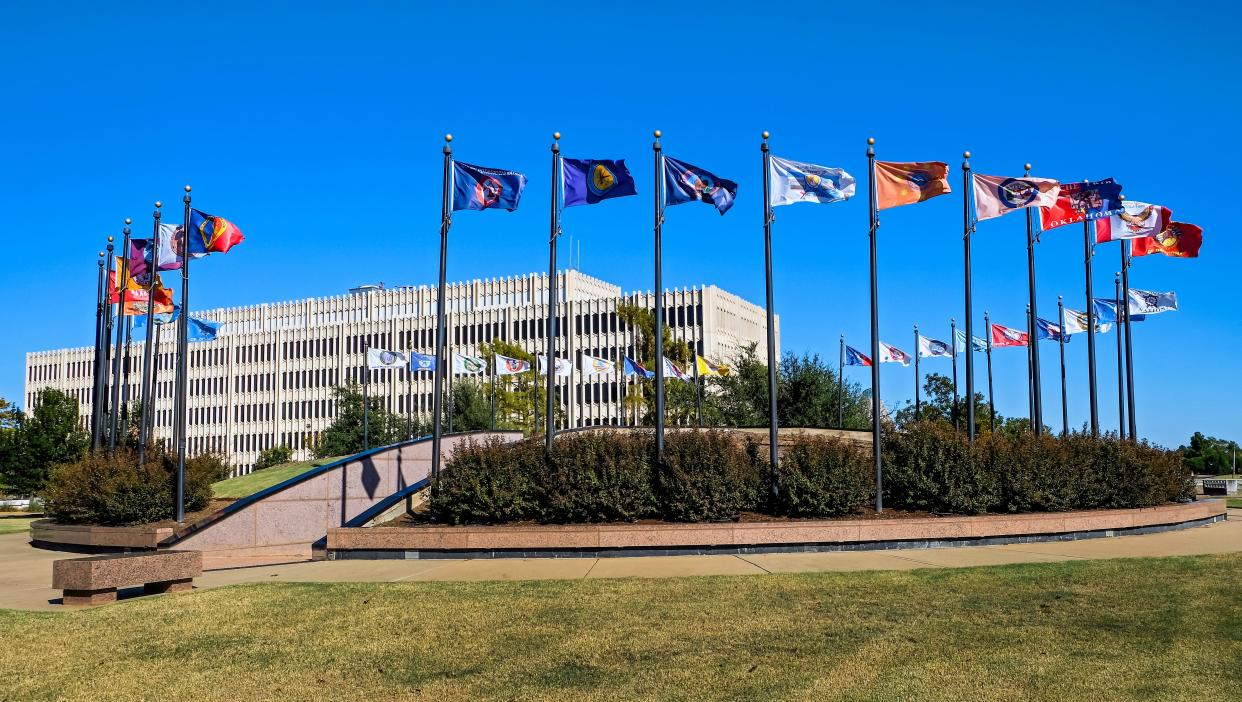
- Oops!Something went wrong.Please try again later.
They have flown outside the Oklahoma Capitol since 1996.
There’s a dark blue flag with a bald eagle soaring above land and water. A purple flag with an unstrung bow and three arrows at its center. A red and blue flag with “O-gah-pah” written in bold.
The flags belong to the Modoc, Choctaw and Quapaw nations, and they flutter among dozens of others in the Tribal Flag Plaza just north of the state Capitol building.
The circular display was meant to honor all of the federally recognized tribal nations based in Oklahoma. But if you count the red, white, blue, yellow, purple and orange flags today, you’ll notice the numbers don’t add up: 35 flags, 36 flagpoles and 38 tribal nations.
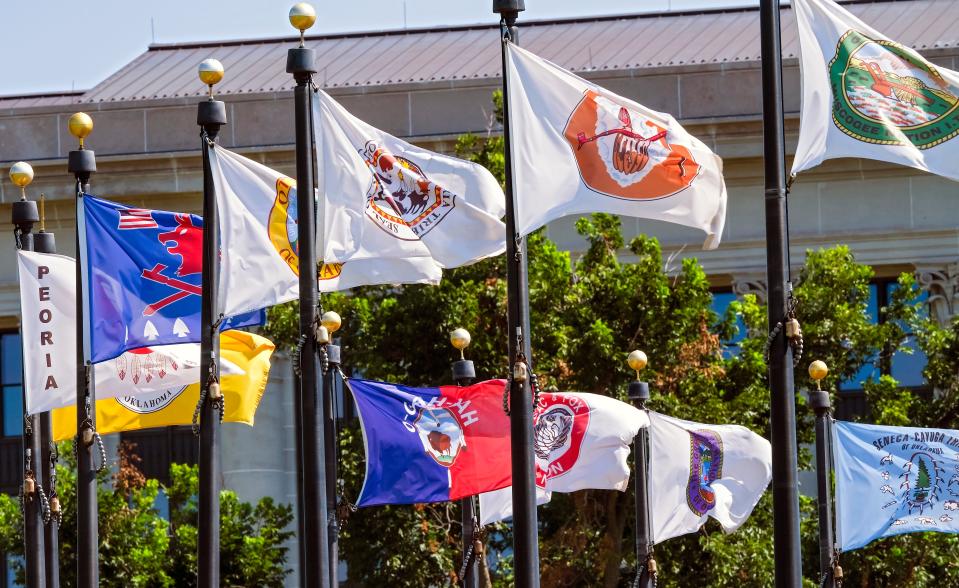
Brad Kills Crow, chief of the Delaware Tribe in Bartlesville, noticed his tribe’s flag was missing on a trip to Oklahoma City. He said he has tried for months to figure out whom he should talk to about adding the Delaware Tribe’s white and red flag.
“We were going to offer to buy our own flagpole or pay the state,” to put one up, he said.
Tension, disputes between tribal governments and state lawmakers have a history as old as Oklahoma itself
The story behind the missing flags and the plaza itself speaks to the complicated nature of Oklahoma’s relationships with tribal governments. Gov. Kevin Stitt has become known for downplaying the need to consult with tribal officials over shared concerns, drawing scrutiny in a state where one in six people are tribal citizens.
More: Governor announces a plan for sports betting in Oklahoma, surprising tribal leaders, state lawmakers
But undercurrents of tension have run through state-tribal relationships since Oklahoma’s founding. The flag plaza is a colorful example. It was born out of controversy, delayed for years and caught in the middle of disputes over tax dollars. And still, some tribes are left out of the display.
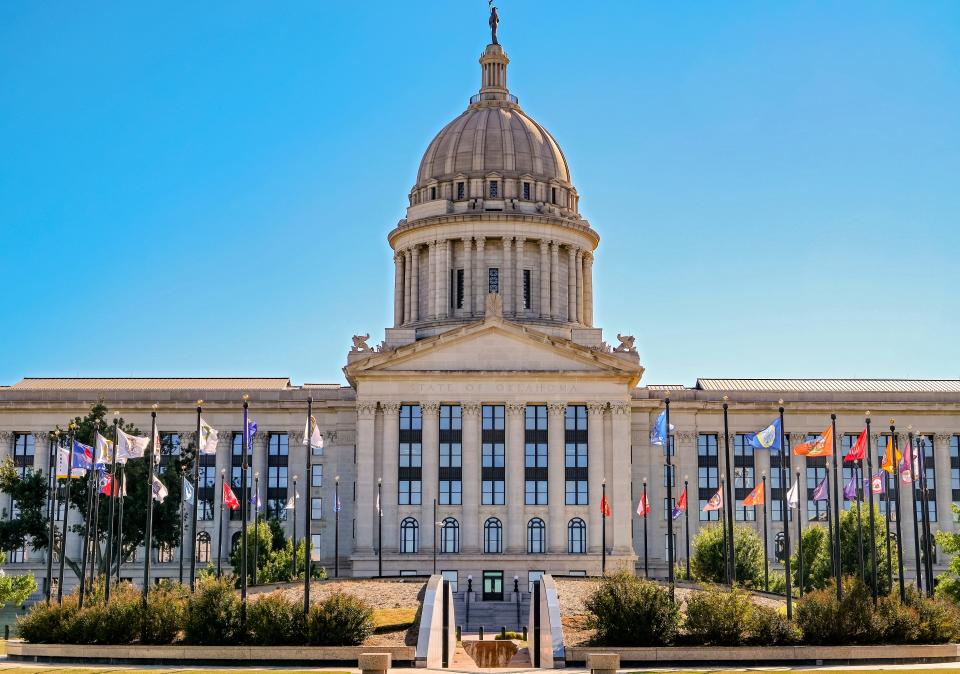
The light blue flag of the Shawnee Tribe in northeast Oklahoma is one of those absent.
Chief Ben Barnes said in a statement that it would be nice for the Shawnee Tribe’s flag to be included. But he said improving state-tribal relations is a much bigger conversation.
“Flag plazas and other modes of ‘tribal inclusion’ such as land acknowledgements, are ultimately meaningless if there’s no genuine desire or effort on the part of the state to work with tribes and respect our tribal nations’ sovereignty and self-determination,” he said.
Barnes also leads the United Indian Nations of Oklahoma. Several tribal leaders formed the advocacy group in 1985, at a time when Oklahoma officials were trying to thwart tribes from opening bingo halls. State leaders questioned the rights of tribal nations and insisted Oklahoma could tax their operations.
How the tribal flags became a part of the landscape of the Oklahoma Capitol
In 1987, as the dispute deepened, then-Gov. Henry Bellmon announced plans to meet with tribal officials. His adviser described the talks as the first-ever conversation between an Oklahoma governor and tribal leaders about tribal sovereignty.
The idea of flying every tribal nation’s flag outside the state Capitol came up the following year.
Sen. Enoch Kelly Haney, a longtime lawmaker and citizen of the Seminole Nation, inserted the plan into a contentious resolution that called on state officials to resume flying the Confederate flag at the Capitol.
Haney’s amendment required the “appropriate display” of all tribal flags, as well.
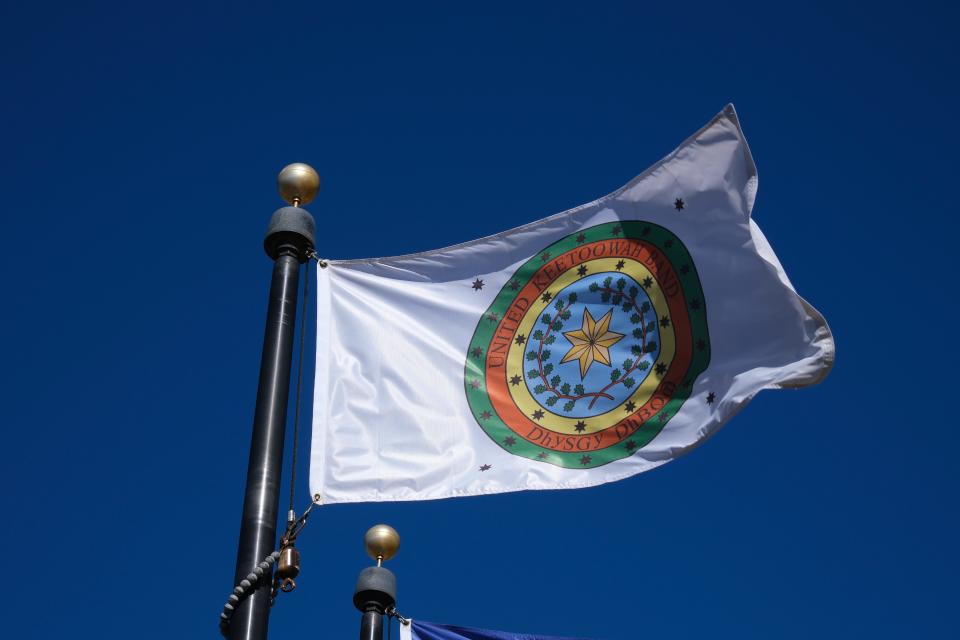
Organizers planned to build the display north of the Capitol between two state office buildings. They expected it would cost at least $400,000. The Legislature appropriated $99,000.
Efforts to raise more money from tribes and others did not come close to filling the funding gap. Construction stopped. The site became so overgrown with weeds that when a groundskeeping crew arrived to clean it up in the summer of 1991, the yard work was statewide news.
Lawmakers agreed to spend $300,000 in bond money to cover the remaining construction costs in 1993. Haney told The Oklahoman he believed the funding signaled “a more cooperative spirit between the state of Oklahoma and tribal governments.”
He also noted the state stood to receive millions of dollars every year through new tax compacts with tribal governments — the same deals that now, 30 years later, are caught in a legal fight between Stitt and legislators.
More: Hearing ends without a 'permanent solution' for state-tribal compacts
The flag plaza — called The Meeting Place — was finished in 1996. It features a landscaped granite mound encircled by 36 flagpoles.
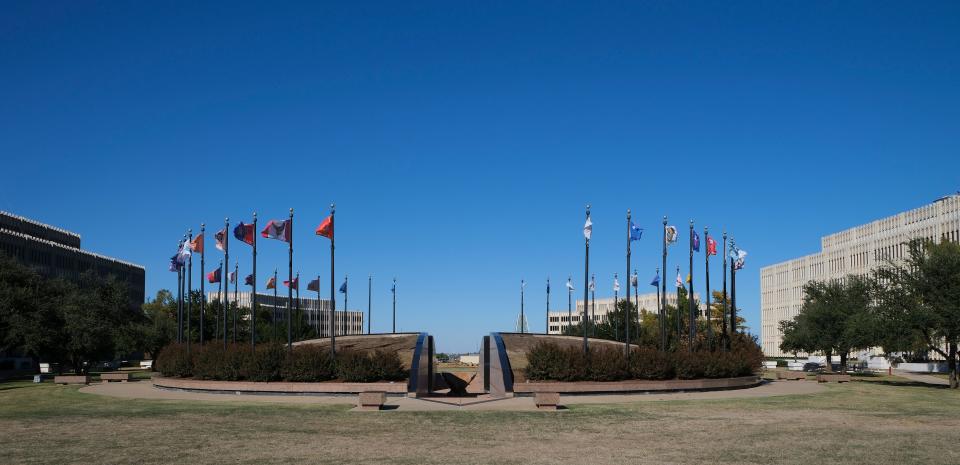
Even from the beginning, one of the poles was bare. It still is. Visitors can tell it was meant for the Kickapoo Tribe, based in McLoud, because the flags are arranged in alphabetical order.
“We do not have an official flag and never have,” said Trey Ervin, who works in the Kickapoo administration office.
He said state officials periodically have reached out asking about adding a Kickapoo flag. The answer has never changed.
“We’ve never had a flag,” Ervin said.
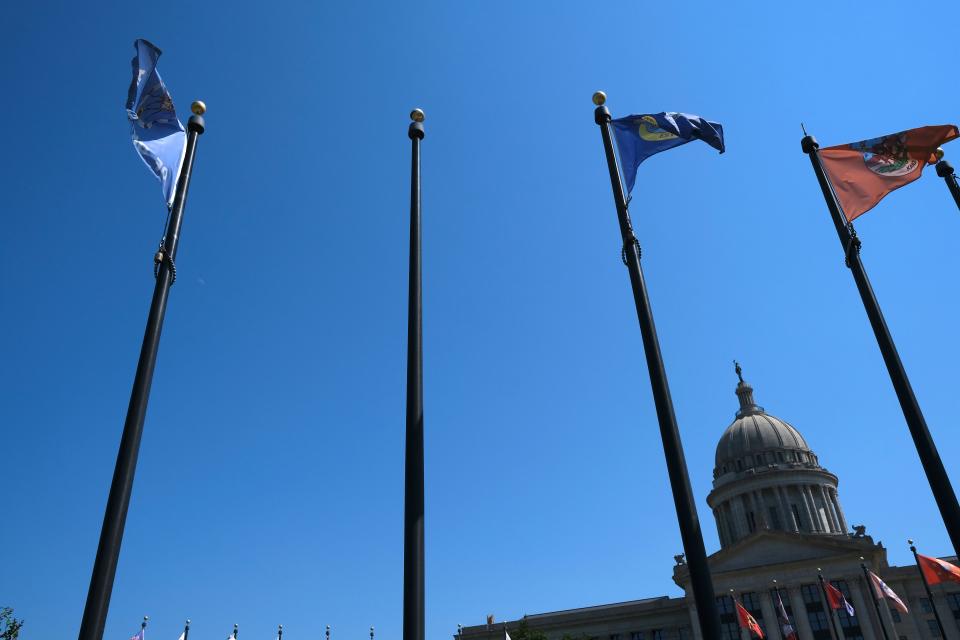
Why are the Delaware and Shawnee tribe flags missing?
What about the missing flags of the Delaware and Shawnee tribes?
Federal officials did not recognize the Delaware and Shawnee as standalone tribal governments when the plaza opened in March 1996. The Delaware Tribe regained that status months later (before it would later lose and regain recognition again in 2009). The Shawnee Tribe secured federal recognition in 2000.
Neither of the tribes had received their own reservations when they were forced into Indian Territory. They had moved onto parts of the Cherokee Nation’s reservation, eventually leading to decades of conflict over their governmental rights.
“That’s why our flag wasn’t there,” Kills Crow said.
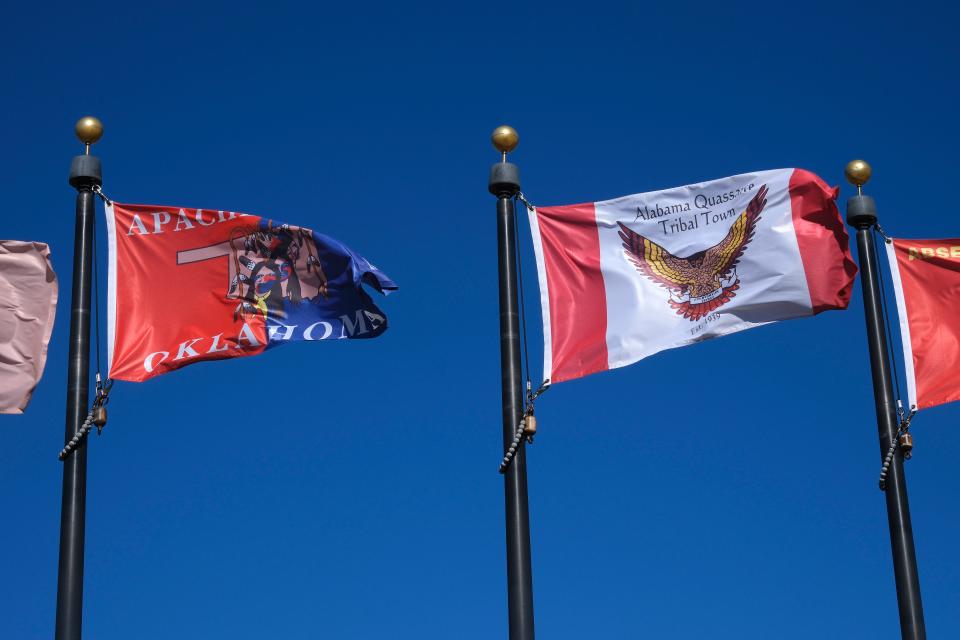
After the Delaware and Shawnee tribes regained federal recognition, Oklahoma officials never expanded or reconfigured the Capitol plaza to incorporate their flags. Christa Helfrey, a spokesperson for the Office of Management and Enterprise Services, said agency leaders in charge of maintaining the plaza “know of no plans to expand or add additional flags.”
Kills Crow said he’s not upset about the exclusion, but still would like to find the right person to talk to about including the Delaware Tribe flag.
“If we can get one up there, great,” Kills Crow said. “If not, we’re still going to be here. The Delawares are still going to be here.”
Molly Young covers Indigenous affairs. Reach her at mollyyoung@gannett.com or 405-347-3534.
This article originally appeared on Oklahoman: A flag display at the Oklahoma Capitol leaves some tribal nations out

